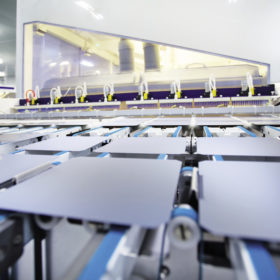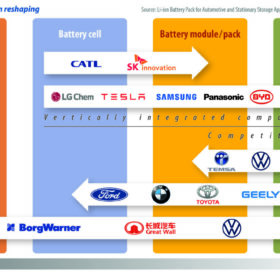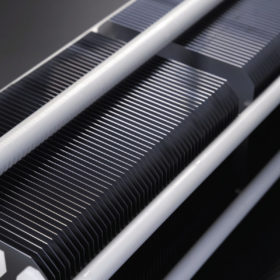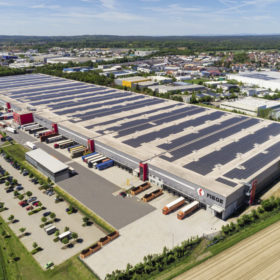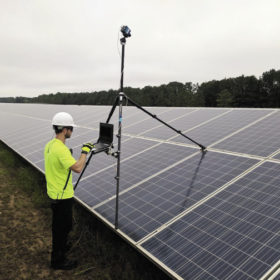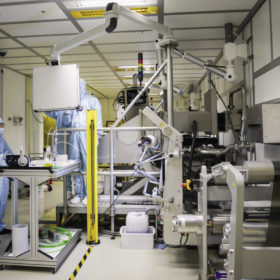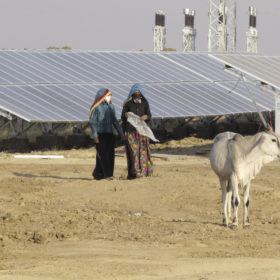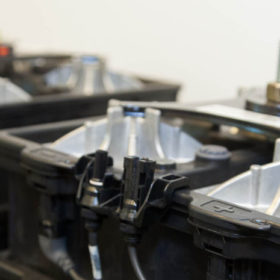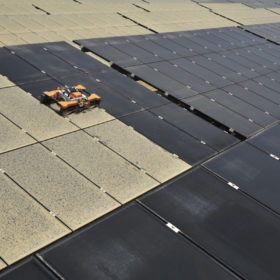The long read: Criteria and implications for gallium-doping
As a remedy for light-induced degradation (LID) in crystalline silicon cells, gallium-doped wafers are showing considerable promise. With reports that ingot growth productivity can rival that of boron doping, it seems that gallium doping may now be able to meet the cost, integration and performance criteria that have informed solar manufacturing technology adoption, writes Alex Barrows, senior research analyst at U.K.-based consultancy Exawatt.
The long read: Cheaper, safer EV batteries to bolster grid
Electric vehicles can transition from liabilities to assets if steps are taken by battery manufacturers, the auto industry, and policymakers, argues Milan Rosina, a principal analyst in the power electronics and batteries division of Yole Développement.
The long read: Carriers key for quality cell surfaces
The path to lower solar LCOE can be painful; just ask a PV manufacturer. However, ever-larger crystalline wafers may cause more pain than they are worth, argues Gerry Knoch, the managing director of wet bench provider exateq. For high efficiency, eliminating cross contamination in wet processes is vital and can be achieved – with carriers playing an important role.
The long read: Understanding LeTID
Light- and elevated temperature-induced degradation (LeTID) of PV cells can have far-reaching impacts on the efficiency of modules. Alison Ciesla and Brett Hallam of the University of New South Wales argue that accelerated testing, such as that included in the forthcoming IEC standards, is critical for LeTID identification and quantification in order to manage these impacts.
The long read: ‘We’re better off without standards’
Many factors are important in ballasting flat roof systems, such as wind speed and roof shape. In the past, however, wind force has unfortunately been underestimated, says wind expert Hans Ruscheweyh. pv magazine addressed this topic in a recent webinar with initiative partner Schletter, and drew several interesting points from the discussion.
The long read: EL to the field – Assessing plant health
Electroluminescence imaging is gaining traction in the field at project sites for operations and maintenance and to support PV plant mergers and acquisitions. EL testing can help PV asset owners evaluate power plant system health and can predict potential future underperformance and failures. Tristan Erion-Lorico, the head of PVEL’s module business, and dowstream business chief Andrew Sundling discuss the outlook for this enabling technology.
The long read: 2020 is the decade of perovskite PV
About 10 years ago, perovskite solar cells (PSCs) made their entry into the world of PV with a power conversion efficiency of 3.8%. Fast forward to 2020, and PSCs are the talk of the town, with a string of impressive laboratory achievements to their name. Global research efforts have shifted toward PSCs as efficiencies keep on getting thrashed on a regular basis. But is it too soon to say that the technology is ready for commercialization?
The long read: The right tools and tenders for building a quality framework in India
“Quality control is expensive.” This common misperception is largely responsible for many of the product defects, design mistakes, and bad practices in the construction and commissioning of PV plants in several markets around the world. Strong downward price pressure underlined by reverse-auctions has created a false assumption that a budget for quality control is not necessary – as PI Berlin’s work in India is revealing.
Affordable storage technologies key to bringing solar energy to scale in India
Earlier this year, when a landmark tender by India’s nodal agency for solar energy, Solar Energy Corporation of India (SECI), concluded the largest solar-cum-storage tender globally (~3 GWh of storage connected to 1.2 GW of solar), it highlighted a critical challenge India faces in bringing solar energy to scale: battery storage technologies.
The long read: The research behind dust mitigation
Solar PV is surging in the Middle East, due to its sustainability and decentralized nature. But with the ample sunlight of the region comes fine dust, which can sharply reduce power output. Zulfa Rasheed from the Rochester Institute of Technology in Dubai looked at the latest research in the field and found that module-glass coating and robotic solutions appear to be the most promising options when it comes to dealing with dust.
